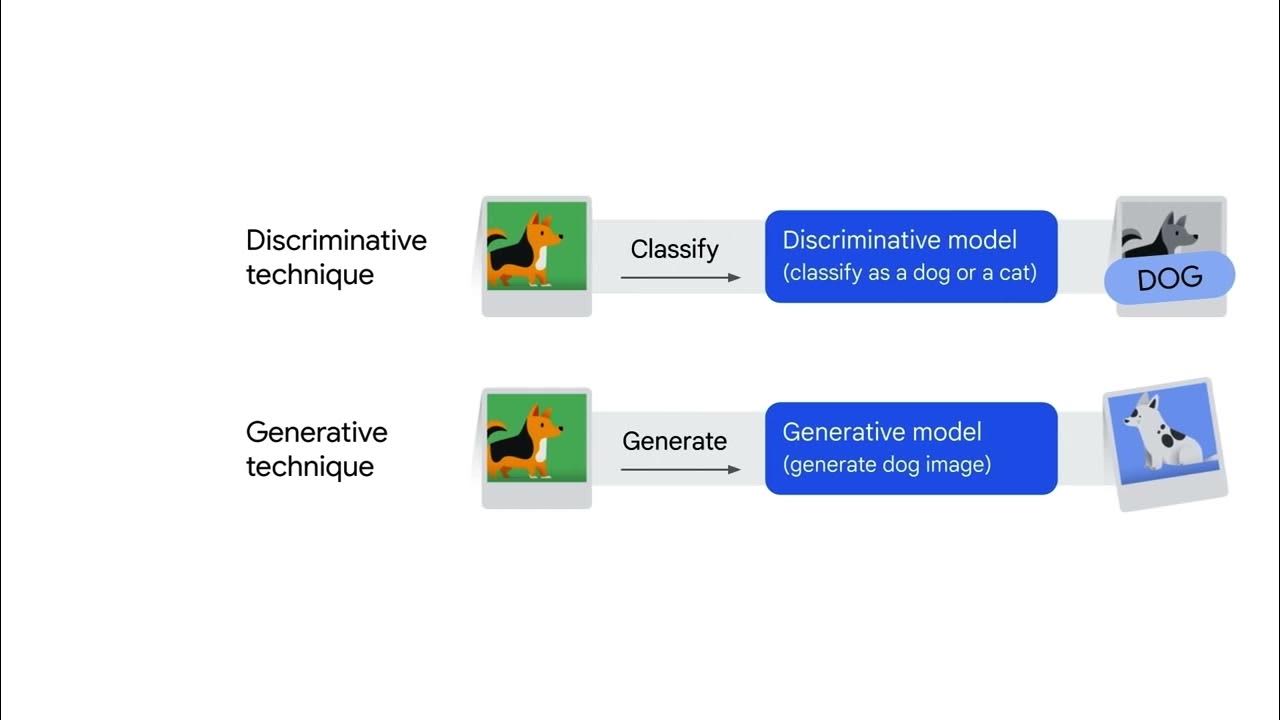Generative AI, Ini Penjelasan Singkatnya
Summary
TLDRGenerative AI is a rapidly growing field, encompassing models like GPT-3 and DALL·E that create content in various forms such as text, images, and more. These models are trained on massive datasets, with GPT-3 using internet data and DALL·E employing diffusion techniques. Diffusion-based AI, which has existed for nearly a decade, alters input data by adding noise and refining the output through iterative processes. OpenAI has improved this process by integrating CLIP, a system that rates outputs based on their alignment with user prompts. This combination has made generative AI more powerful and effective in creating realistic content.
Takeaways
- 😀 Generative AI models can produce content such as text, images, videos, and audio.
- 😀 Examples of generative AI include DALL-E (which generates images) and GPT (which generates text).
- 😀 Other image-generating AI models include MidJourney, Stable Diffusion, and GauGAN.
- 😀 Generative AI models are trained using large datasets containing millions of samples.
- 😀 GPT models are trained with publicly available data from the internet.
- 😀 The training method used for GPT models is called reinforcement learning from human feedback (RLHF).
- 😀 Generative AI models that produce images often use the diffusion technique, inspired by terminal equilibrium in physics.
- 😀 The diffusion technique adds noise to the input data and iterates until the output matches the user’s request.
- 😀 Diffusion-based AI has existed for nearly 10 years, but recent improvements have made it more effective.
- 😀 OpenAI uses Contrastive Language-Image Pretraining (CLIP) to improve the quality of image generation.
- 😀 CLIP scores generated images based on their similarity to the user’s prompt, guiding the AI towards better outputs.
Q & A
What is generative AI?
-Generative AI refers to artificial intelligence models capable of creating content, including text, images, videos, and audio, based on training from large datasets.
What are some well-known examples of generative AI?
-Examples of generative AI include GPT-3, which generates text, and DALL·E, which generates images. Other models for image generation include MidJourney, Stable Diffusion, and GauGAN2.
How does GPT-3 work?
-GPT-3, created by OpenAI, is a text-generating AI model trained using publicly available data from the internet. It relies on reinforcement learning from human feedback to improve its responses.
What is the diffusion technique in generative AI?
-The diffusion technique in generative AI is inspired by thermodynamic equilibrium in physics. It involves adding noise to input data and repeating the process until the generated content matches the desired output.
How long has diffusion-based AI been around?
-Diffusion-based AI has existed for nearly 10 years, though recent advancements, particularly by OpenAI, have made the technique more effective.
What is CLIP, and how does it enhance generative AI?
-CLIP (Contrastive Language-Image Pretraining) is a model that scores the output of generative AI based on its similarity to the user's prompt. This score guides the AI to refine its output until it achieves the highest possible similarity.
What role does CLIP play in the diffusion process?
-CLIP assigns a score to the image generated during the diffusion process. The AI continues to adjust the image based on this score, refining it until it matches the user's prompt with the highest similarity.
Why is generative AI becoming a hot topic?
-Generative AI is gaining attention due to the impressive capabilities of models like DALL·E and GPT-3, which are revolutionizing fields such as content creation, art, and communication.
How does reinforcement learning from human feedback (RLHF) work in training AI like GPT-3?
-Reinforcement learning from human feedback (RLHF) is a technique where the AI model is trained not just on raw data but also with human feedback to guide its learning process, improving its ability to generate useful and relevant responses.
What is the significance of the noise addition in the diffusion process?
-Adding noise to the input data in the diffusion process helps to iteratively refine the output. The AI continues to add noise and then remove it, shaping the final output until it aligns with the desired content.
Outlines

This section is available to paid users only. Please upgrade to access this part.
Upgrade NowMindmap

This section is available to paid users only. Please upgrade to access this part.
Upgrade NowKeywords

This section is available to paid users only. Please upgrade to access this part.
Upgrade NowHighlights

This section is available to paid users only. Please upgrade to access this part.
Upgrade NowTranscripts

This section is available to paid users only. Please upgrade to access this part.
Upgrade NowBrowse More Related Video

What is Generative AI | Introduction to Generative AI | Generative AI Explained | Simplilearn

Generative AI vs. Conventional AI: Introduction For Operational Risk Professionals

Introduction to Generative AI

Curso 2 - Aula 2: Diferença entre IA e IA Generativa

What is Generative AI?

Generative AI for Absolute Beginners : Introduction
5.0 / 5 (0 votes)